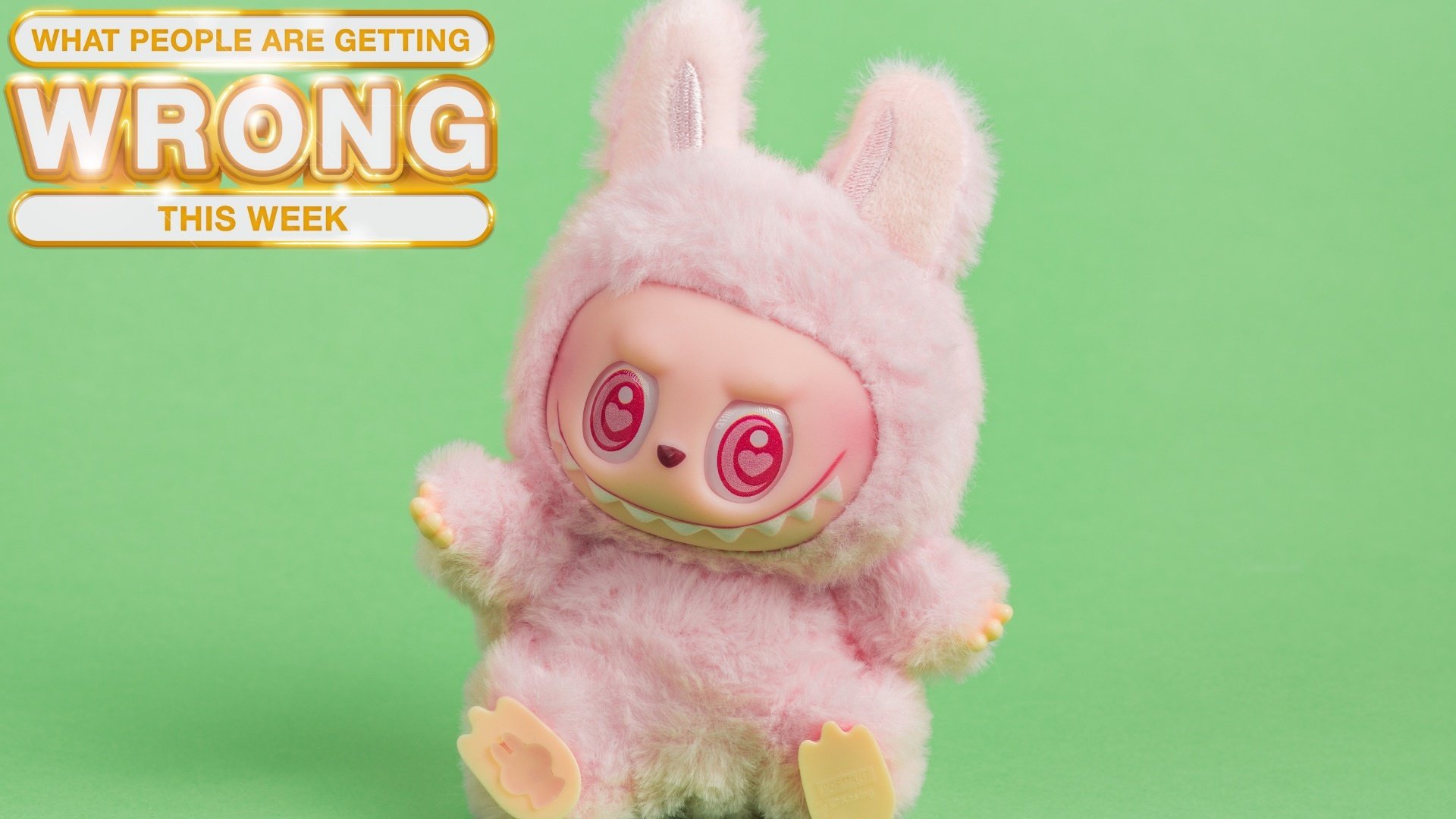This week I’m highlighting my very favorite kind of fake news story: the kind where people think a children’s toy is leading the wee ones into Satan’s clutches. The toys under scrutiny this time are Labubu dolls, those massively popular, sort-of-ugly collectible monster figures that have gone global, spreading in recent years like a plush typhoid fever.
Why people are calling Labubu dolls evil
People on TikTok, Facebook, and Instagram are very serious about the demonic nature of Labubu dolls and they are ringing the koo-koo alarm bells. “You need to know what you’re inviting in your home,” reports TikToker The Spilled Tee, “[Labubu dolls] could be a modern day vessel for a demon god worshipped thousands of years ago, and I’m not just guessing about that.”
The demon god said to be infecting Labubus isn’t your run-of-the-mill Beelzebub though. It’s Pazuzu, a deity worshipped in Mesopotamia in the first millennium BCE—a real demonology deep-cut.
“Pazuzu is known as the ‘King of demons of the wind,” explains Lindsay Ivan on TikTok. “Demons prey on the young,” she adds helpfully.
I can’t say for sure that an ancient Mesopotamian god isn’t preying on innocent children through mass-produced plush-and-vinyl dolls, but the evidence is…lacking. Labubu dolls are based on a character from a 2015 storybook series called The Monsters by Kasing Lung, who says she was inspired by Northern European fairy tales, not Babylonian wind gods. Also, Labubu dolls don’t actually look like Pazuzu idols—the images in posts like this are AI-generated and not based on ancient artifacts. While it is true that Pazuzu was worshipped and feared as the king demon of the wind, he wasn’t an evil deity exactly, and he didn’t prey on children; he protected them.
On the surface, the main link between Labubu and Pazuzu seems to be that their names sound kind of similar, but as a well-known demonology researchers and 12th level necromancer, I’ve uncovered another shocking Labubu/Pazuzu connection that even TikTok’s evil-toy experts have missed.
Just who is Pazuzu?
Unlike Labubu, Pazuzu was a ferocious looking demon with a dog-like face, bulging eyes, a scaly body, and a snake-headed penis. According to Nils P Heeße’s “Evil Against Evil. The Demon Pazuzu,” Pazuzu figures were extremely popular in ancient Mesopotamia, especially in houses with children. Archaeologists have dug up a ton of of them, and holes drilled through some mean they were probably worn as charms. The designs are consistent enough to suggest they were mass produced.
So, a mass-produced, collectible, slightly disturbing figure that people with children kept in their homes: Pazuzu dolls were basically just like Labubu dolls.
The nuanced morality of Mesopotamian demons
Pazuzu figures probably weren’t mere decoration; the demon had a job to do. Back in ancient Mesopotamia, Lamashtu was the real bad guy. How bad? Well, the lion-headed goddess survived by drinking the blood of infants. Today, we would classify these unfortunate children as victims of “crib death” or SIDS, but the Babylonians blamed it on Lamashtu. Pazuzu’s domain was destructive winds, so he wasn’t a good guy, but he wasn’t a baby-killer either. Pazuzu’s power over winds meant that he could blow Lamashtu back to the underworld from whence she came, so Pazuzu figurines were probably meant to protect the children of the household by scaring off Lamashtu.
Ancient people had sophisticated and nuanced relationships with demons, and there is some ambiguity involved in their use of Pazuzu idols. Babylonian people were essentially saying, “This dude blew down my house last year, so I don’t love the guy, but this ugly statue is keeping Lamashtu from drinking my child’s blood, so we’re keeping it on the mantle, snake-headed penis and all. Pazuzu may be an asshole, but he’s our asshole.”
What became of Pazuzu, anyway?
Time gets everyone in the end, even gods. Believers in Pazuzu slowly forgot about the wind demon in favor of newer, cooler deities like Jehovah, Jesus, Allah, and Brian Wilson. The baby-protecting idols, charms, and other ‘zuzu merch moldered in Mesopotamian attics, and Pazuzu slept the dreamless sleep of forgotten gods for thousands of years.
But in the early 1970s, Pazuzu rose again. In William Peter Blatty’s novel The Exorcist and the later movie adaptation, Pazuzu possesses young Regan and makes her vomit pea soup all over that meddling priest. Modern Pazuzu is into causing human suffering and corrupting youth instead of controlling wind or banishing baby-killers, but either way, what a comeback! Pazuzu came back to life because he had the one thing gods need: believers. First it was 1970s movie-goers, and now it’s cranks spreading ominous warnings on TikTok and Instagram.
The more things change, the more they etc., etc.
In ancient Mesopotamia, the demons that killed babies and blew down grain silos were not merely symbolic. They were regarded as very real, and they would fuck you up if you crossed them. They were not to be trifled with or joked about. I can’t help but see a similarity between these ancient pagans and the people on TikTok making Labubu/Pazuzu videos: Both believe an evil entity called Pazuzu is directly affecting their lives, even if they disagree on his motives (while most of the folks on TikTok probably call themselves Christians, believing a god like Pazuzu actually exist might technically also make them pagans.)
Despite Judeo-Christian institutions’ long-running efforts to sell the idea that there is only one God (and that they have an exclusive deal with Him), it seems you just can’t stop people from believing in little demons that live in dolls. Folk religion just won’t die. I actually think that’s kind of beautiful. A little scary and maybe weird, but beautiful.
